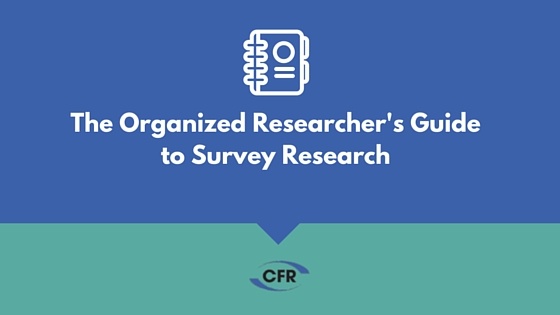
Two Things the Free Online Survey Design Sites Don't Want You to Know

Free survey design tools are available everywhere online, and they are becoming quite popular for both B2C and B2B marketing research. Individuals wishing to send out a lightweight, quickly arranged straw poll can do so from the convenience of their own workstation.
However, there’s a lot more to these free online survey programs than meets the eye. Or, we should say, less. For teams intending to produce accurate, quality data that abides by scientific surveying standards, they may wish to look elsewhere. Even though professional market research firms require an investment, the quality of results they produce and the service options they provide end up being worth every penny.
Research teams in need of reliable, quality data should ditch free online survey tools for the following reasons:
They Are Often “Free” in the Loosest Sense Possible
What if I told you I could give you a “free” ride to the airport, but then made you ride strapped to the roof of the car and dropped you off a few miles down the road? This is the exact same type of model “free” online survey tools use to entice users into spending extra for more features. In reality, the free versions are merely what other software would call a “demo.”
Consider the following limitations to SurveyMonkey’s basic, free account:
- You can only have 10 questions on a survey.
- You are left with the default formatting, which eliminates the piping around question or answer boxes that lends clarity.
- You cannot randomize the question order.
- Only 1,000 recipients can be selected per email invitation.
- You are only allowed to view the first 100 responses collected in the analysis.
- Reporting is not customizable.
For most professional studies, these limitations are unacceptable. 10 questions would be far too prohibitive to satisfy survey goals. Mailing the survey to only 1,000 recipients could mean a minuscule response rate. Non-random question ordering could introduce bias.
The end goal seems to be to give users the slightest taste of functionality so as to draw them into purchasing a paid account. These limitations encourage users further by prompting them during the survey design or analysis phases, similar to how modern mobile games tempt microtransactional purchases by suggesting them at the most frustrating moments of gameplay.
Issues with Privacy and Validity
Another popular survey tool is to utilize Google Drive’s Forms feature. This application is much more flexible than SurveyMonkey basic, but it presents a huge flaw: anyone with the survey link can participate as many times as they want.
In other survey-gathering instruments, privacy becomes a concern since all results are filtered through an intermediary. Respondents may be reluctant to yield personal details or give completely honest answers since protecting privacy or anonymity can be difficult. For instance, SurveyMonkey has no custom permissions function that can password protect certain surveys on certain users’ accounts.
These limitations mean that free online survey tools are the equivalent of ordering a “Kobe” beef burger at a fast food restaurant. You end up with a distinct lack of quality and none of the useful features that make going through the trouble worth it in the first place.
Ensure that your study has the customizability and professionalism it needs to protect respondents while yielding viable data with a true market research firm at your side. If you need help getting started, check out our free guide to survey design best practices and screening question template.



